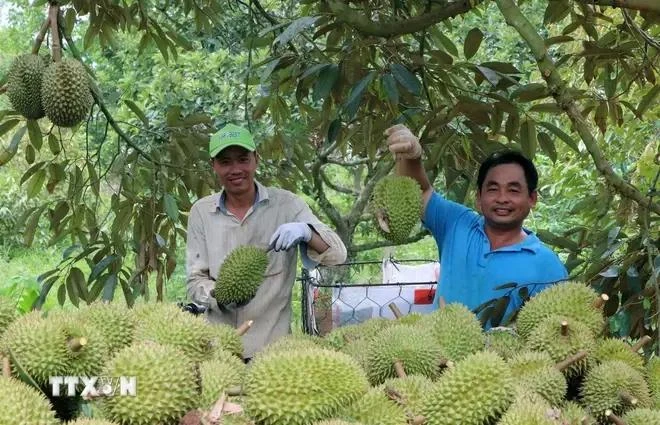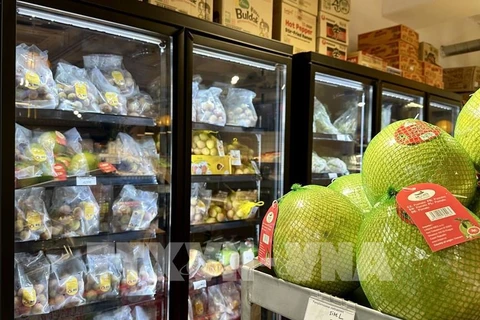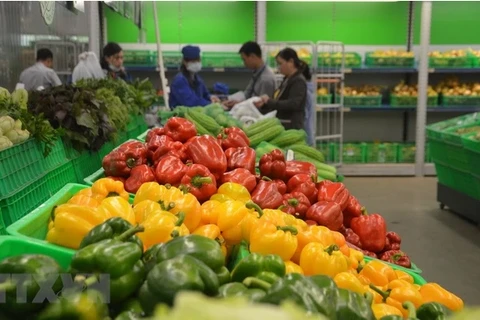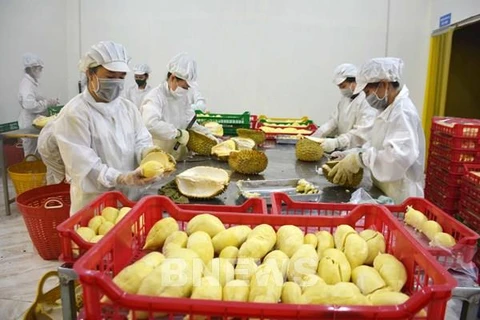
Hanoi (VNA) - To promote fruit exports, meeting phytosanitary requirements to prevent the spread of diseases and ensuring food safety are prerequisites, insiders said.
Fresh fruits such as durian, longan, lychee, mango, dragon fruit, coconut, banana, pineapple, and passion fruit are being favoured in markets like China, Japan, the Republic of Korea (RoK), the US, and the European Union (EU), they said, noting most import markets require products to be cultivated from certified growing areas and be processed at approved facilities before packaging, with the Chinese market as a typical example.
In addition to meeting the above-mentioned requirements, exporters must also comply with the General Administration of Customs (GAC)’s Decree 248 regarding administrative provision on registration of overseas manufacturers of imported food and Decree 249 on measures for the safety administration of imported and exported food, Deputy Director of the Vietnam Sanitary and Phytosanitary Notification Authority and Enquiry Point (SPS Vietnam) Ngo Xuan Nam said, adding that both of them took effect in January 2022.
The EU market has stringent requirements on traceability and product quality standards, particularly food safety, he said. The European Commission (EC) frequently updates maximum pesticide residue levels, especially for fresh and frozen fruits. Therefore, cooperatives and businesses must thoroughly research and understand market information, consumer preferences, and regulations regarding rules of origin and food safety standards, he noted.
For instance, thanks to its good quality, Thanh Ha lychee from the northern province of Hai Duong has been exported to high-end markets such as China, Japan, France, the US, the RoK, and Malaysia.
Last year, Vietnamese lychee imported to Australia by air was sold for about 400,000 - 500,000 VND (15.6 USD-19.5 USD) per kg. Meanwhile, lychee shipped by sea was sold at about 260,000 VND per kg. This is a very high price compared to 70,000 - 100,000 VND per kg in the domestic market.
This year, Thanh Ha lychee is purchased by Red Dragon Co. Ltd and sold at Australian Market Place supermarket at nearly 600,000 VND per kg.
According to the Ministry of Agriculture and Rural Development (MARD), the building and granting growing area and packaging facility codes help orient production in line with market demand and enhance the reputation of Vietnamese agricultural products. To date, 56 localities have granted 7,344 growing area codes and 1,629 packaging facility codes for products exported to China, the US, Australia, New Zealand, RoK, Japan, and the EU.
This is a result of long-term efforts, said Dang Phuc Nguyen, Secretary General of the Vietnam Fruit and Vegetable Association. He elaborated that Vietnamese products must also be inspected and accepted by the importing markets after receiving approval by Vietnamese authorities.
Huynh Tan Dat, Director of the Plant Protection Department under MARD, stressed that for agricultural produce, especially fruits, to be eligible for export, businesses must fully meet import markets' requirements.
Sharing his view, Deputy Minister of Agriculture and Rural Development Hoang Trung said that the ministry has instructed relevant agencies to promptly set up quality standards for harvested fruits to ensure their quality./.






















